

Home
About Us
Allotments
Garden Equipment
Seed Suppliers
Manure Problems
Solve It - Puzzles
Children's Pages
GLA Blog
Weather Blog
School Veg Patch
Useful Links
Weather Blog
Garden Video Blog
Plant Support
** This website is not a shop and doesn’t sell anything! **
Be aware that any external links may contain cookies and you should refer to the particular website's cookie policy
Many plants benefit from being given some support. Most gardeners will appreciate that climbing plants need supporting but without a support structure some free standing plants can also be damaged by wind and rain. In some cases the weight of flowers that a plant has to support can also cause damage.
Before deciding what sort of support is necessary it is important to understand how a plant grows and how it uses support.
Climbing plants whether edible or growing merely for decoration add interest to the plot or garden. Not only do they add height but provide a screen so that you don't see the whole of the garden at once. They can also provide an element of privacy. They can be used to clothe walls or fences or alternatively they can climb up trees or free standing supports available in all sorts of shapes and sizes.

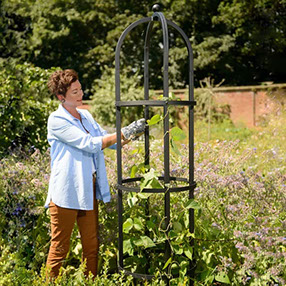
Photos above from Harrod Horticultural
Plants that twist up support
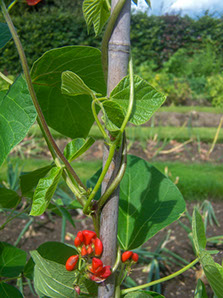 Plants such as runner beans have stems that wind around supports.
Plants such as runner beans have stems that wind around supports.
As long as they are given a sturdy framework with poles up which they can climb they will be happy. The framework must be firmly fixed into the soil as once it is fully clothed it will provide resistance to any strong winds and be liable to either blow over or break off at ground level.
You may also have to make sure that the twisty stems climb up in the way you want as the young growing stems will attach themselves to any nearby structure or plant as well as to the framework provided.
On an allotment most gardeners will construct a wigwam or tunnel from bamboo canes which can be tied in place at the top. You can also buy a special ring which will hold the tops of canes in a wigwam formation.
In a garden setting you may prefer to but something purpose made. Beans can be grown in the same position year after year so a permanent framework can be provided.
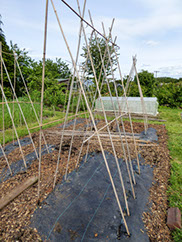
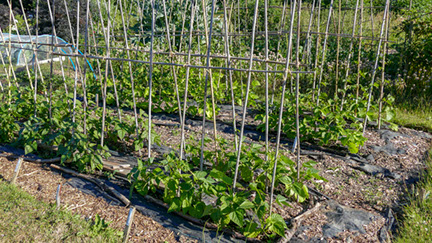
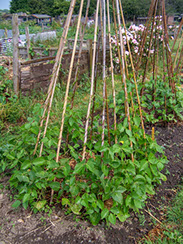
Plants with tendrils
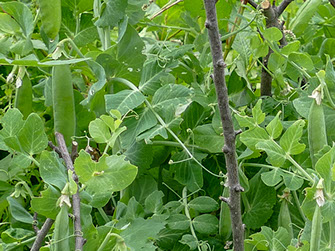 Plants such as sweet peas climb by clinging on to any support using tendrils. Garden peas and clematis behave in the same way.
Plants such as sweet peas climb by clinging on to any support using tendrils. Garden peas and clematis behave in the same way.
This type of climbing plant cannot attach itself to poles such as bamboo canes as they are too large to enable the tendril to get a firm hold.
If you are using a cane type of framework this will need to either be draped with netting of have wire tied around the structure at regular intervals.
Most varieties of garden peas are much shorter than runner beans of sweet peas and don’t need support structures to be very high.
We use hazel poles and twiggy branches to support out sweet peas and garden peas.
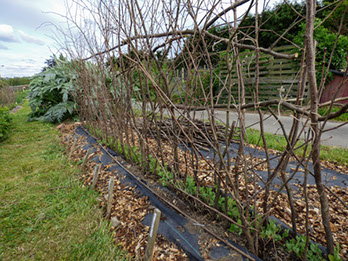
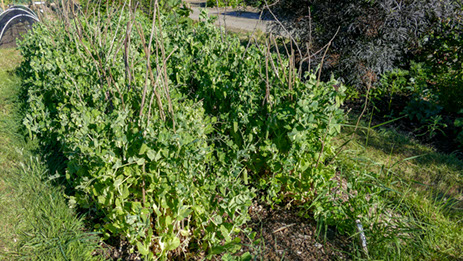
In the garden wires are fastened to fences to allow the clematis to climb.
Plants with suckers
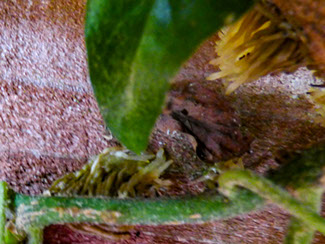

Plant such as ivy cling on by using suckering rootlets that grow along their stems. The rootlets grow into the surface of the supports. Young plants will need tying in as it will take a while for the rootlets to develop.
This type of plant will attach itself to fences and walls.
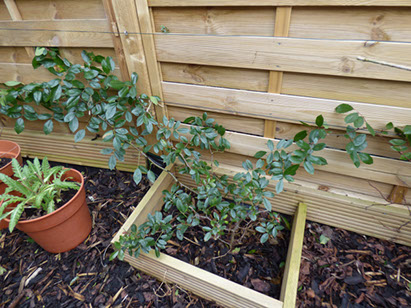
Climbers that need tying in
Some plants have no physical means of climbing and just lean against any support. Climbing roses belong to this category. They will need tying in to any support on a regular basis.
Choosing a support
Once you have determined how your plant grows and which type of support you need you will then be faced with a choice of functional or decorative supports.
Metal and wooden supports are available in a vast number of styles and sizes.
Tying in
Where plants need to be tied in to supports, it is important to choose a tie that is not going to damage your plants nor stick out like a sore thumbs. You could use any sort of string but plastic string tends to be a bright green that looks unsightly and natural twine tends to stretch and sag. I
Supporting border perennials
Many border perennials benefit from some support - it’s really disappointing to see all the plants that were looking so well suddenly looking windswept. Plants can also be flattened during a heavy rainstorm. So far we have only used a type of metal linking support in our front garden in some borders we have used twiggy sticks. As yet I haven't found a type of support that really suits but there are lots of shapes and sizes to try.
Most of the commercially available supports are made from metal and are designed to blend in with the plants. There are lots of shapes and sizes available. Harrod Horticultural have produced a video which gives you some idea of the range of supports available and how to use them.
Tomato supports
I’ve gathered together some links from companies offering gardening products for sale. I have no connection to the suppliers and therefore cannot be held responsible for any changes in items available or any issues that may arise when making a purchase.
Some companies give me a small commission on sales that are generated from this website which helps me to maintain this and sister websites but this in no way means that I am recommending purchases from a particular company.
Our Plot at Green Lane Allotments Blog | A Gardener's Weather Diary | School Vegetable Patch Website
© Our Plot on Green Lane Allotments - Please email me if you wish to use any of this site's content